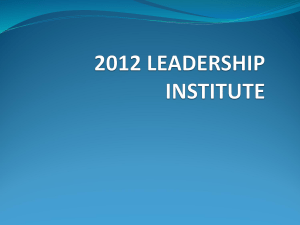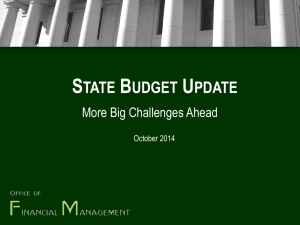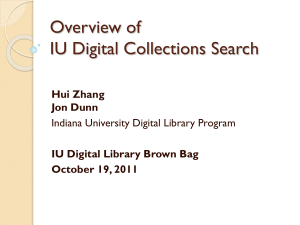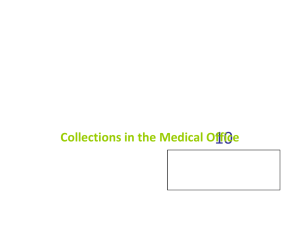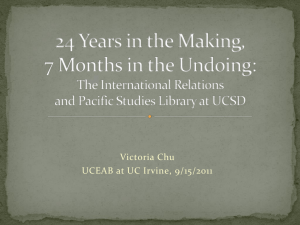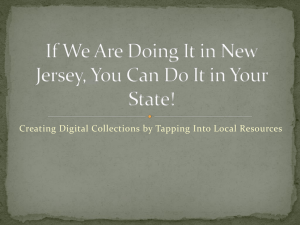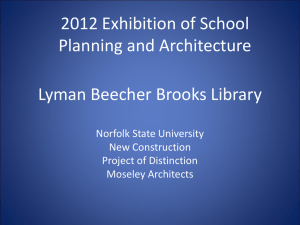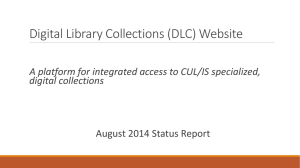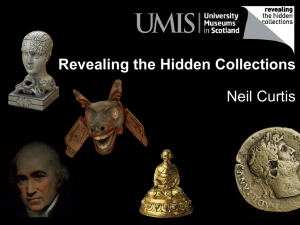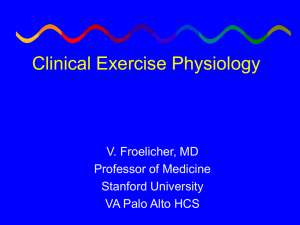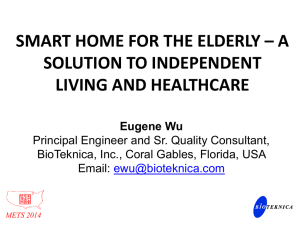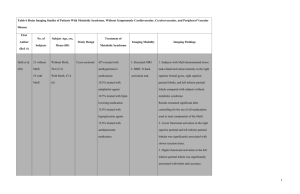What is a digital collections platform?
advertisement
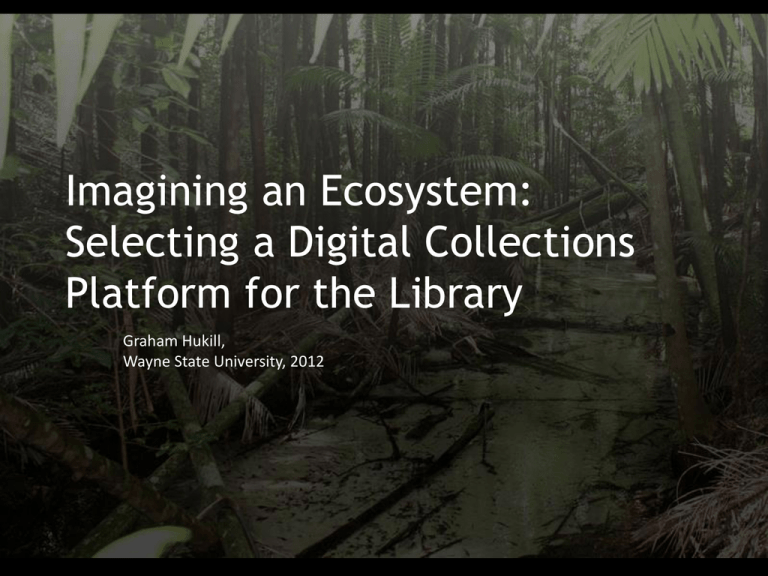
Imagining an Ecosystem: Selecting a Digital Collections Platform for the Library Graham Hukill, Wayne State University, 2012 Overview • • • • • What is a digital collection? What is a digital collections platform? The lay of the land Our Model Lessons Learned and Learning WHAT IS A DIGITAL COLLECTION? “In general, creating a work in new media can be understood as the construction of an interface to a database.” -Lev Manowich, “Database as a genre of new media” http://vv.arts.ucla.edu/AI_Society/manovich.html “A digital collection consists of digital objects that are selected and organized to facilitate their discovery, access, and use. Objects, metadata, and the user interface together create the user experience of a collection.” -NISO, “A Framework of Guidance for Building Good Digital Collections” http://framework.niso.org WHAT IS A DIGITAL COLLECTIONS PLATFORM? “A repository is to storage media as a library is to shelves. A storage mechanism is needed, but all public benefit depends upon a repository: a safe place to put content that also provides documentation, preservation and access.” - Richard Wright, BBC Library Mission “Wayne State University Libraries advance scholarship, student learning and faculty innovation through continuous development of a library that serves as a national model for a research University with an urban teaching and service mission.” - http://lib.wayne.edu/info/about/#mission Primary Functions • • • • • • Store digital objects Provide access to digital resources Facilitate search and discovery Encourage preservation actions and planning Integrate with Library infrastructure A steward in the “Information Lifecycle”… But we’re not going to go down that rabbit hole today… ADMIRAL Data Management lifecycle diagram: http://imageweb.zoo.ox.ac.uk/wiki/index.php/ADMIRAL_Data_Management_Plan_Template Digital Collections Ecosystem: Simple Edition Digital Collections Platform vs. Institutional Repository (IR) • Are they different? Sure! • Can they be the same? Absolutely! • Is this confusing? You betcha! • Our IR, DigitalCommons@Wayne, focuses on preserving and making accessible scholarly work generated by the University – DC is very good at what it does – Will become a modular / contributing component of our greater Digital Collections “Ecosystem” Digital Collections Ecosystem: Examples “From Ingest to Access: A Day in the Life of a HathiTrust Digital Object” www.hathitrust.org/documents/HathiTrust-PASIG-200910.pdf “Islandlives Workflow” http://duraspace.org/fedora/repository/duraspace:118/OBJ/Island ora.pdf "A watch, undone": http://www.flickr.com/photos/32943218@N05/6308833700/ THE LAY OF THE LAND… Open-Source Platforms • DSpace – Originally MIT and HP labs, now Duraspace. open-source, turnkey, IResque, OAIS compliant • Fedora Commons – Originally Cornell, now Duraspace, open-source. NOT turnkey, no discovery layer, VERY customizable • Omeka – PHP based, originally designed for metadata and online exhibits • Eprints – Early pioneer in digital repositories, IR-esque, emphasis on text Duraspace? • “the appropriate strategy to avoid the perceived future deadlock in development is to abandon local solutions and seek to utilize other popular Open Source tools that will more appropriately meet the needs of the community.” - http://biecoll.ub.uni-bielefeld.de/volltexte/2011/5167/index_en.html • The best of both worlds in one platform? It might not be that simple… Other Key Players • Apache Solr – Full-text, faceted search built on Apache Lucene – Fast, open-source, REST-like interface – Very popular, “Best of Breed” • Blacklight – Discovery Interface for Solr – Missing link between users and powerful metadata backend – Ruby on Rails Gem Other Key Players • Hydra: “Hydra is an ecosystem of components that lets institutions deploy robust and durable digital repositories (the body) supporting multiple “heads”: fully-featured digital asset management applications and tailored workflows. Its principle platforms are the Fedora Commons repository software, Solr, Ruby on Rails and Blacklight.” - http://projecthydra.org/ Yale’s “Office of Digital Initiatives and Assets” (ODAI) “This diagram does not identify every system at Yale. Rather, it illustrates the type and relationship of modular systems that constitute a comprehensive approach to digital content management.” - http://odai.yale.edu/planning-and-architecture OUR MODEL "The key to the interoperability of digital cultural content, and in fact any digital collection, is consistency . . . inconsistent digital collections require … more complex, costly and unreliable systems and processes.” - http://mirror.dlib.org/dlib/january02/gill/01gill.html “...one thought to consider is that we are trying to tackle technology incompatibility which is often caused by proprietary software and formats. Therefore, it’s a little ironic to implement proprietary software tools to manage this problem.” http://blogs.loc.gov/digitalpreservation/2012/10/archivematica-and-the-open-source-mindset-for-digital-preservation-systems/ Desired Platform Characteristics: • Open-source, Free • Flexible, Iterative, and Agile Development • Modular • Support Preservation Activities • Facilitate Discovery • Robust and API-like methods for Access Our Current Infrastructure • • • • • DLXS Omeka Mirrored Linux / Ubuntu file system Discovery through catalog Ad hoc collection interfaces – not necessarily a bad thing… Current Infrastructure Ideal Infrastructure The Reality • When envisioning different layers, components are co-dependant • Researching different approaches and software reveals new pieces and eliminates others Our Model A work in progress… “…a minimal set of requirements and services that must be in place to effect the infrastructure of a universal, open, widearea digital information infrastructure system (“the System”). - http://dx.doi.org/10.1007/s00799-005-0128-x A HathiTrust subset File Structure • Simple Linux File System at first, transition into OAIS inspired system (Fedora, DSpace) • Fully mirrored storage • Self-describing File System – METS files will be duplicated in SQL storage and in file system METS objects • XML – Descriptive and Structural information about objects – wrapper for other metadata formats (DC, MIX, MARC, PREMIS, etc.) • • • • • Central to the overall architecture Flexibility: constituent pieces can be located anywhere Consistency: normalized metadata for all objects Interoperability: digital objects accessible by various systems Widely adopted <file ID="FID1" GROUPID="2" USE="Image-Service-MedRes"> <FLocat LOCTYPE="URL" xlink:type="simple" xlink:href="letter_city00001.jpg"/> </file> ..... <div ORDER="1" LABEL="page01" DMDID="dm2" TYPE="page"> <fptr FILEID="FID1"/> </div> METS objects • Provides a framework to handle different kinds of digital objects. • #1 – somewhat typical “digital collection” • #2 and #3 – eTexts • #4 – “atomistic” digital object, containing select pieces of other objects • Similar to “collection” at scale and breadth perhaps, but fundamentally a bit different Metadata Index & Database • • • • Searchable store of METS files Backend to Discovery layer (Blacklight) Ancillary to Access layer (various components) Solr – Java “servlet”, HTTP interface – Full-text search, faceted search, database integration – JSON, XML, PHP, Ruby, Python, XSLT, Velocity and custom Java binary output formats – Industry standard: used by Internet Archive, HathiTrust, The Guardian, Instagram, you get the picture… Discovery Layer • Critical component, often first point of contact with collections for users • Search within, and across, collections • Search all material types (visual, text, A/V) • Much of the “look and feel” of a digital collection and the digital collection environment • Potential for accessing and presenting digital objects as well Current landscape... - Howard Besser, “The Next Stage: Moving from Isolated Digital Collections to Interoperable Digital Libraries.” What it could look like... - Howard Besser, “The Next Stage: Moving from Isolated Digital Collections to Interoperable Digital Libraries.” Discovery: Blacklight NC State – “Historical State 125” http://historicalstate.lib.ncsu.edu/ Discovery: Blacklight University of Wisconsin Madison – Library Catalog http://search.library.wisconsin.edu/ Discovery: Blacklight Stanford – “SearchWorks” Library Catalog http://searchworks.stanford.edu/ Discovery: Blacklight New York Public Library Andre Studios 1930 – 1941 http://andrestudios.nypl.org/browse Access • • • • Receives requests from discovery layer Read appropriate METS file Pull digital objects from “storage” Provide access / interface for these materials • Types – Images – eTexts – Audio / Video Access – eText Reader Not so fast… METS files • Creation of METS files can be time consuming, and very different for different kinds of materials • At right, simplistic model of how to ingest and create METS files for eTexts • “METS creation tool”, while handy, requires human intervention Not so fast… METS files • Archivematica – Batch, recursive processing of items – Focused on preservation (AIP creation) – very descriptive METS files (JHOVE, Droid, etc.) • Archivist's Toolkit (AT) – Java application, difficult to batch process – Requires SQL backend, finicky LESSONS LEARNED AND LEARNING We’re on the right track! http://code4lib.library.nd.edu/c4l11/source/diagrams/ia-inq-all.png https://wiki.duraspace.org/download/attachments/22022608/Hydra+Architecture+DiagramV2.jp g https://wiki.duraspac e.org/display/FEDOR ACREATE/REST+API+ Tests https://wiki.duraspace.org/display/hydra/EAD+in+Hydra-BlacklightAtrium • Asking fundamental questions about our digital materials, what digital collections are, has been key – Sometimes by envisioning an ideal solution, we uncovered others who had trod similar ground • “These “Best of Breed” solutions should always be considered over local homegrown tooling.” - http://biecoll.ub.uni-bielefeld.de/volltexte/2011/5167/index_en.html – Utilize the hard and spectacular work of others – But sometimes the works has not been done. If not, why not? • In these diagrams, sometimes the “arrows” are the most challenging bits to reconcile – API interactions – Often require crosswalking or transformation of information • Internet Browsers are the most powerful and consistently updated pieces of software around – Internet Archive’s Book Reader pure HTML, CSS, and Javascript • Discoverability and Access across collections should be available from one location – storage and metadata layers can provide collections and objects through API’s to other – and even yet unforeseen systems • Occasionally step back and ask: – Is this system more consistent and versatile than before? – Will it scale? can it evolve? – Is this what our users want? what our collections need? THANKS! QUESTIONS? Graham Hukill, Wayne State University, 2012 References Images ADMIRAL Data Management lifecycle diagram: http://imageweb.zoo.ox.ac.uk/wiki/index.php/ADMIRAL_Data_Management_Plan_Template Stanford "SearchWorks" screenshot: http://searchworks.stanford.edu/ NC State screenshot: http://historicalstate.lib.ncsu.edu/ John Hopkins University Youtube screenshot: https://catalyst.library.jhu.edu/ UW Madison screenshot: http://search.library.wisconsin.edu/ NYPL screenshot: http://andrestudios.nypl.org/browse "A watch, undone": http://www.flickr.com/photos/32943218@N05/6308833700/ "Blueprint": http://www.flickr.com/photos/wscullin/3770016707/ "Donovan School (Ann Arbor, Mich.) Miss Lily E. Goodhew teacher, Feb. 1911.": http://quod.lib.umich.edu/b/bhl/x-bl000298/bl000298
